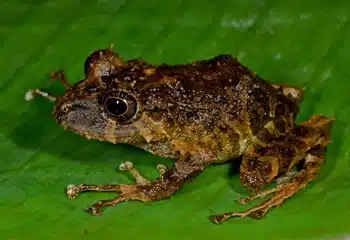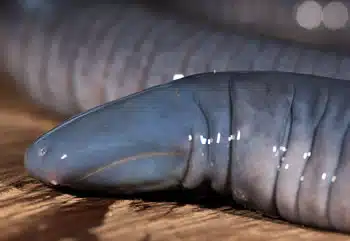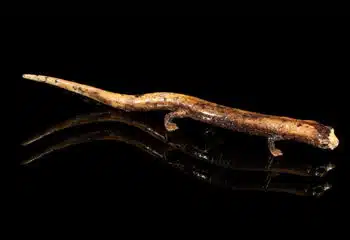About
Amphibians
Amphibians are the oldest tetrapods, or four-legged animals, and appeared on land for the first time over 350,000,000 years ago. Salamander-like creatures emerged from the water, having descended from fishes that evolved bones in their fins for navigating underwater obstacles. They are numerous on every continent except Antarctica.
Today, amphibians are represented by three major “orders”. Of the more than 8,680 described species of amphibian, there are more than 7,095 frogs and toads (Anura), 824 salamanders and newts (Caudata), and 254 species of wormlike caecilians (Gymnophiona). Our own discoveries will add at least 30 names to the list of known amphibians. Sadly, there are now some 170 species extinct in the wild.
By far the greatest diversity of amphibians occurs in the tropics, between 23.4 degrees latitude on either side of the equator. For instance, in the small tropical country of Ecuador, there are 485 species of amphibians, more than all of the United States and Canada combined.
One trait that unites all amphibians is that they have relatively permeable skin, and they can breathe and sometimes even drink through it. This leaky skin unfortunately leads them to be especially susceptible to toxins and other environmental stressors. The name “amphibian”, which means “two lives” in Latin, refers to their double life both in and out of the water. The typical amphibian life cycle starts in the water with eggs that then hatch into larvae — tadpoles, in the case of frogs — which metamorphose into adult form. The adults can live relatively independently of water for extended periods of time, and in some cases, like the spadefoot toads of the southwestern United States, they can remain underground nearly an entire year without water. But even the spadefoots need to return to water to breed and complete the life cycle. However, amphibians with more derived life-histories, like that of the rain frogs (see below) need never go to water.
One surprising characteristic of frogs is that they can be excellent parents. For instance, the poison frogs of the family Dendrobatidae will lay their eggs in small pockets of water in epiphytic plants such as bromeliads high up in rainforest trees. The eggs and then tadpoles are fairly safe from their would-be predators like fish and aquatic dragonfly larvae. But being safe from being eaten also means that there isn’t much to eat. The solution of to this problem is provided by the parents, one of which — usually the male — will scoop the tadpoles up on its back and take them to another, more fruitful, bromeliad. In some species, the female will come back to the same bromeliad that she laid eggs in earlier and feed the hungry tadpoles more of her eggs. These examples illustrate just a few of the amazing adaptations that amphibians have used for hundreds of millions of years to get by in a myriad of places in a myriad of ways.
Cameras and Gear for Conservation
Donate
TBG Store
Threatened & Endangered Species
Climate Change
Reptiles
Insects
Amphibian Population Declines
Did You Know?
Snakes like boas and rattlesnakes have heat sensing organs on their faces to detect warm-blooded prey.
Beetles (Order Coleoptera) constitute the largest group of animals in the entire Animal Kingdom. Some 400,000 species have been described.
Many salamanders have no lungs at all and rely on breathing completely through their skin.
The word “bug” actually refers to a specific group of insects that include bedbugs, cicadas, leafhoppers and aphids. To prevent confusion, these creatures are sometimes known as “true bugs”.
Even though reptiles and amphibians are sometimes called “cold-blooded” they actually get heat from their surroundings and can be a lot warmer than so-called “warm-blooded” animals like mammals and birds.
The most toxic animal on earth, the golden poison frog, was once used to coat poison darts by indigenous peoples in what is now Colombia. A single frog holds enough toxin to kill 20,000 mice!
Toxin from a poison frog is now being used to develop a powerful new pain-reliever.
Gila monster venom was used to create perhaps the best treatment for diabetes available today.
What We’re Doing
Our own discoveries will add at least 30 new species of amphibians to the total known, which will assist in making ecosystem management and endangered species recommendations.
What You Can Do
Keep learning about amphibians! Keep informed about what is happening with these remarkable creatures. And consider getting involved with TBG or other organizations that are working on the front lines gaining knowledge of amphibians’ unique biology.


